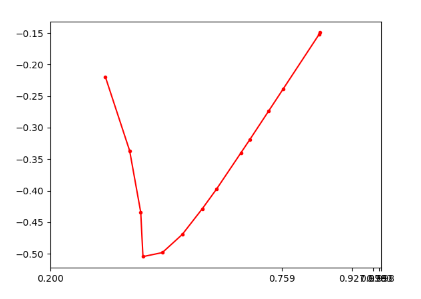This repository contains a PyTorch implementation of Stochastic Weight Averaging-Gaussian (SWAG) from the paper
A Simple Baseline for Bayesian Uncertainty in Deep Learning
by Wesley Maddox, Timur Garipov, Pavel Izmailov, Dmitry Vetrov, and Andrew Gordon Wilson
SWA-Gaussian (SWAG) is a convenient method for uncertainty representation and calibration in Bayesian deep learning. The key idea of SWAG is that the SGD iterates, with a modified learning rate schedule, act like samples from a Gaussian distribution; SWAG fits this Gaussian distribution by capturing the SWA mean and a covariance matrix, representing the first two moments of SGD iterates. We use this Gaussian distribution as a posterior over neural network weights, and then perform a Bayesian model average, for uncertainty representation and calibration.
In this repo, we implement SWAG for image classification with several different architectures on both CIFAR datasets and ImageNet. We also implement SWAG for semantic segmentation on CamVid using our implementation of a FCDenseNet67. We additionally include several other experiments on exploring the covariance of the gradients of the SGD iterates, the eigenvalues of the Hessian, and width/PCA decompositions of the SWAG approximate posterior.
| CIFAR10 -> STL10 | CIFAR100 |
|---|---|
 |
 |
Please cite our work if you find it useful:
@inproceedings{maddox_2019_simple,
title={A simple baseline for bayesian uncertainty in deep learning},
author={Maddox, Wesley J and Izmailov, Pavel and Garipov, Timur and Vetrov, Dmitry P and Wilson, Andrew Gordon},
booktitle={Advances in Neural Information Processing Systems},
pages={13153--13164},
year={2019}
}python setup.py developSee requirements.txt file for requirements that came from our setup. We use Pytorch 1.0.0 in our experiments.
Unless otherwise described, all experiments were run on a single GPU. Note that if you are using CUDA 10 you may need to manually install Pytorch with the correct CUDA toolkit.
.
+-- swag/
| +-- posteriors/
| +-- swag.py (class definition for SWA, SWAG and SWAG-Diag)
| +-- laplace.py (class definition for KFAC Laplace)
| +-- models/ (Folder with all model definitions)
| +-- utils.py (utility functions)
+-- experiments/
| +-- train/ (folder containing standard training scripts for non-ImageNet data)
| +-- imagenet/ (folder containing ImageNet training scripts)
| +-- grad_cov/ (gradient covariance and optimal learning rate experiments)
| +-- hessian_eigs/ (folder for eigenvalues of hessian)
| +-- segmentation/ (folder containing training scripts for segmentation experiments)
| +-- uncertainty/ (folder containing scripts and methods for all uncertainty experiments)
| +-- width/ (folder containing scripts for PCA and SVD of SGD trajectories)
+-- tests/ (folder containing tests for SWAG sampling and SWAG log-likelihood calculation.)
See experiments/ for particular READMEs*
Some other commands are listed here:
Hessian eigenvalues
cd experiments/hessian_eigs; python run_hess_eigs.py --dataset CIFAR100 --data_path [data_path] --model PreResNet110 --use_test --file [ckpt] --save_path [output.npz]
Gradient covariances
cd experiments/grad_cov; python run_grad_cov.py --dataset CIFAR100 --data_path [data_path] --model VGG16 --use_test --epochs=300 --lr_init=0.05 --wd=5e-4 --swa --swa_start 161 --swa_lr=0.01 --grad_cov_start 251 --dir [dir]
Note that this will output the gradient covariances onto the console, so you ought to write these into a log file and retrieve them afterwards.
Stochastic weight averaging: Pytorch repo; most of the base methods and model definitions are built off of this repo.
Model implementations:
- VGG: https://github.com/pytorch/vision/
- PreResNet: https://github.com/bearpaw/pytorch-classification
- WideResNet: https://github.com/meliketoy/wide-resnet.pytorch
- FCDensenet67: https://github.com/bfortuner/pytorch_tiramisu
Hessian eigenvalue computation: PyTorch repo, but we ultimately ended up using GPyTorch as it allows calculation of more eigenvalues.
Segmentation evaluation metrics: Lasagne repo








